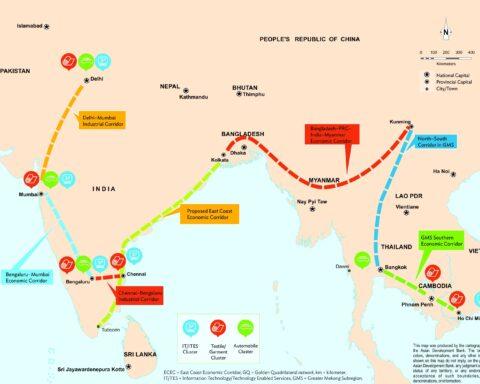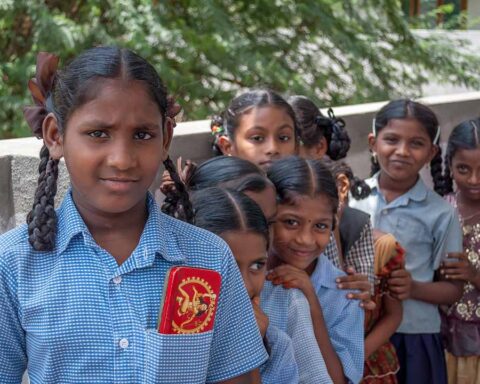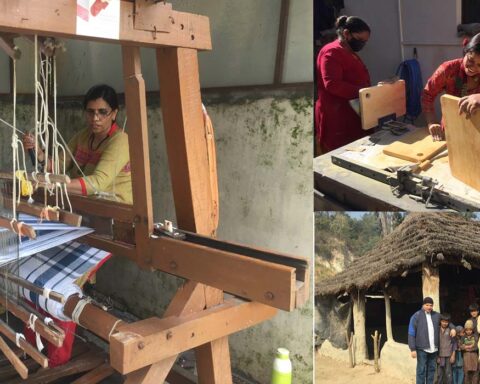Though the Green Revolution helped India achieve food self-sufficiency, it began to run out of steam by the mid-1990s when growth in population started to outstrip rise in agricultural productivity. Over the next decade or so it became clear that unless another round of steps was taken to increase farm productivity and income, a serious crisis would overtake the agriculture sector.
The latest in the series of measures to increase agricultural productivity is a proposal to create AgriStack—an all-in-one digital magic bullet that is expected to raise productivity, save water, transform agricultural markets and double farmers’ incomes. But discussions and initial exploratory projects show that several major hurdles have to be crossed before the proposed agricultural digital platform can be successfully implemented.
The crisis has two fronts. It is not limited to foodgrain production falling short of requirements in the future. People were deserting farms and migrating to urban centres as returns from farming dwindled. As long back as 2005, Prime Minister Manmohan Singh had underlined the need to double foodgrain production (210 million tonnes at that time) to more than 400 million tonnes over the following decade.
This target has not yet been achieved. Foodgrain production reached only 323 million tonnes in 2022-23. A commission was set up in 2005 under Dr M.S. Swaminathan, who had overseen the introduction and implementation of the Green Revolution, to look into the problem.
Poor marketing infrastructure, price uncertainties, the need to enhance water efficiency through conservation and better irrigation methods, lack of insurance and credit facilities and, above all, poor flow of information to the farmers were identified by the Swaminathan Commission as some of the factors responsible for low returns on farming, particularly for small farmers and the landless. Though foodgrain production had risen dramatically (two-and-a-half times) in just four decades, beginning from the mid-1960s, at 200 million tonnes in 2000-02, the number of undernourished people was about a fifth of the population— indicating low purchasing power.
The Commission recognised that farm incomes had to be raised and the focus had to be on the small farmer (owning less than two hectares of land), who made up 80% of India’s farmers. It was productivity of small farms that had to be increased to reduce hunger, poverty, and rural unemployment. The means of doing this, the Commission said, was through crop-livestock integrated production systems and multiple livelihood opportunities through agro-processing and biomass utilisation.
It also recommended removal of barriers to internal trade in agricultural products by the creation of a single country-wide market so that farmers could get the best prices. But to do this would mean persuading states to reform the Agriculture Produce Marketing Committee (APMC) as passing Central legislation would involve meddling in a state subject.
The Commission, however, said that India could learn from the legislative experience of the European Union (EU) that created a single market in 2003 for all goods, including agricultural produce.
The Commission observed that the APMCs, regulated by the states, do not offer the farmer any choices. Market charges have become high due to cesses and taxes imposed by states while farmers complain of lack of transparency in weighing. Market yards are quite distant from villages and in the absence of storage facilities the small farmer is often forced to sell his produce at even 15% to 20% below cost, tempted by on-the-spot payment. A complex tax structure, multiplicity of state-level taxes, the permit system of transport vehicles, the harassment to which transport operators are subjected at barriers, and random checks lead to delays and increased costs. Coupled with this, various food related laws, rules and controls make internal trade difficult and markets fragmented. All this meant higher prices for consumers and a lower share for the producer in the price.
As a way to improve the condition of the farmer the Commission recommended the creation of a national land advisory service as a virtual service connected to state and block level advisory services that could link land use decisions with ecological, meteorological and market factors on a location and season specific basis. This service would be connected to the meteorological department, Indian Space Research Organisation (ISRO), agriculture research centres and universities, commodities exchanges and futures markets. It should have the capacity to assess potential surpluses and shortages of essential commodities.
Keeping in mind these difficulties of the farm sector, in September 2020 the Central government finally decided to take the bold step of taking a state subject into its own hands and pushed through Parliament three farm laws aimed at creating a unified national agricultural market replacing the state APMCs, permitting contract farming and removing constraints on production and storage of foodgrain.
This triggered huge protests by farmers who suspected that the motive behind the passage of the laws was to bring the agriculture sector under corporate dominance. Unable to either end the protests or handle its potential political fallout, the government withdrew the three laws. Though the agriculture sector accounts for 16.5% of the GDP, it employs about half of the country’s labour force and is a major source for rural employment. This gives them considerable political clout.
As the farm laws ran into rough weather, the government decided to lay greater emphasis on the apparently easier digital route with the release of a Consultation Paper on India Digital Ecosystem of Agriculture (IDEA) in June 2021 as the way to doubling farmers’ incomes, a poll promise.
In this paper the government quoted the opinion of the World Bank Group which said, “The digital revolution—and the data it generates—are key to building an agriculture and food system that is efficient, environmentally sustainable, equitable and able to link the world’s 570 million farms with 8 billion consumers.” The vision of IDEA presented in the paper said that it aimed to build a National Digital Agriculture Ecosystem to elevate the sector to higher levels of efficiency and productivity and to improve the welfare and income of farmers.
In December 2022, Parliament was informed that the government had signed MoUs with 11 private companies to work on proof of concept on various aspects of AgriStack. These companies included Microsoft, Cisco, Jio, Amazon and ESRI. In this year’s (2023-24) Budget speech, the finance minister announced that a Digital Public Infrastructure for Agriculture (DPIA) would be built that would enable “inclusive farmer centric solutions through relevant information on crop planning and health, improved access to farm inputs, credit and insurance, help for crop estimation, market intelligence and support for growth of agri-tech industry and start-ups”.
AgriStack, that carries the farmers’ database, has been named after India Stack. India Stack is made up of three layers—the identity layer (UID or Aadhaar), payment layer (UPI) and data empowerment layer that allows the secure exchange of data.
It envisages the use of tools like drones and AI for generating and disseminating digital data on various facets of agriculture including soil and crop health, irrigation, fertiliser use and availability, precision farming and market intelligence to help farmers take crucial decisions and obtain the best prices.
Ajay Vir Jakhar, a citrus farmer from Punjab and chairman of farm non-profit Bharat Krishak Samaj, feels the AgriStack proposal does not adequately address questions regarding governance, regulation, access and monetisation of data. “The government seems to have reprinted what the corporate sector’s suggestions were… it’s about control of information.” In an interview to The India Forum, Jakhar expressed the view that AgriStack would lead to consolidation of power and money in a few hands to adversely affect the public that includes the farmer.
A workshop organised in Delhi at the end of 2022 by non-profit The Agri Collaborative (TAC) to discuss the consultation paper on IDEA, brought out several impediments that could thwart the implementation of AgriStack. The workshop, attended by representatives of government, private enterprises, start-ups and academia, was summed up by TAC in the form of a report published by agricultural research organisation Consultive Group on International Agriculture Research (CGIAR) in June-July this year.
According to this report, several important hurdles need to be overcome before AgriStack can become a success. These hurdles include the digital divide in India, lack of data standards preventing interoperability, absence of strong data governance mechanisms and privacy concerns leading to low trust levels in digital solutions and the vast diversity of datasets being maintained by different platforms like governments, research institutions, farmers and industry websites.


























